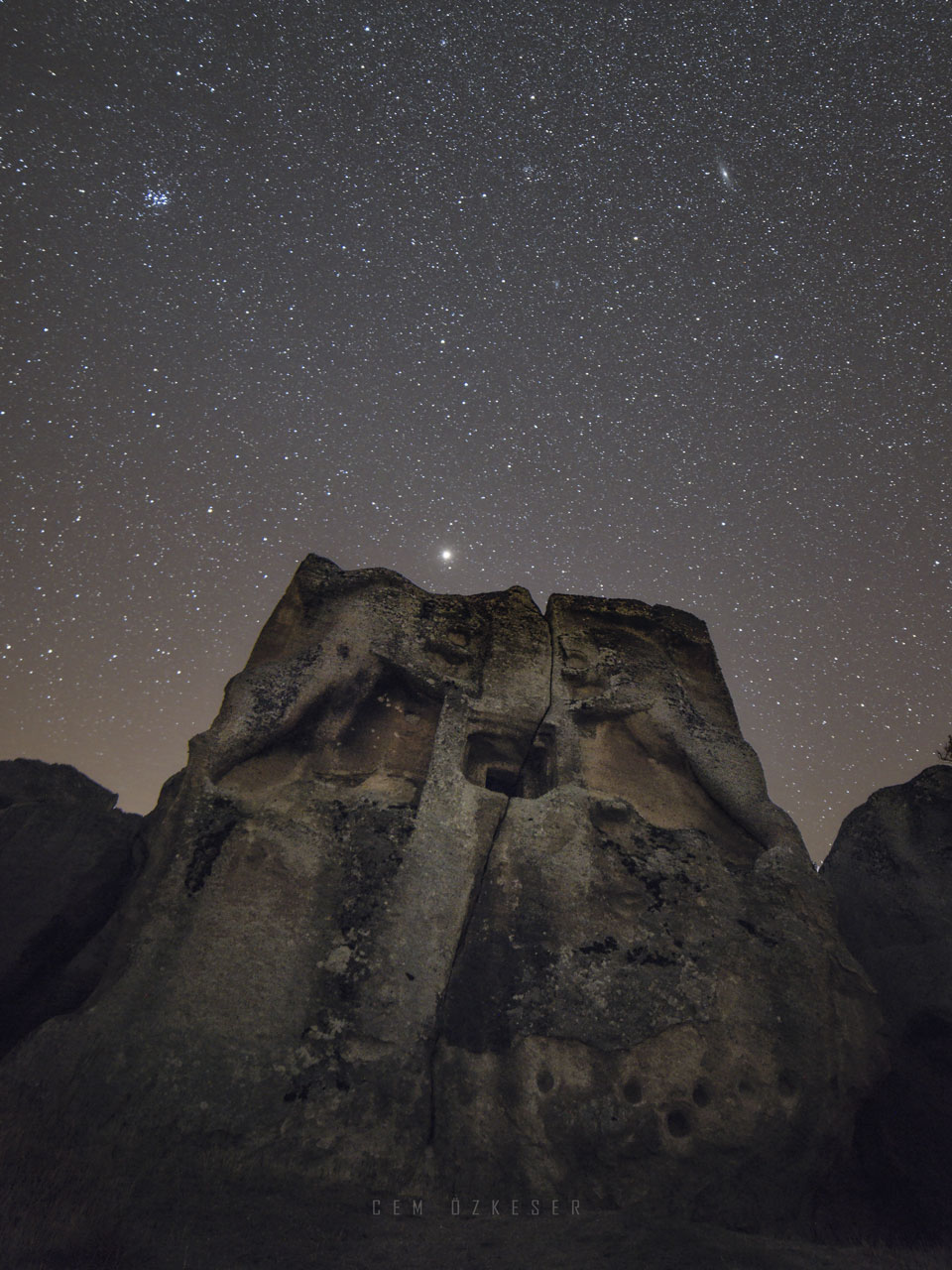2020年10月13日
Mars, Pleiades, and Andromeda over Stone Lions
Image Credit & Copyright: Cem Özkeser
Explanation: Three very different — and very famous — objects were all captured in a single frame last month. On the upper left is the bright blue Pleiades, perhaps the most famous cluster of stars on the night sky. The Pleiades (M45) is about 450 light years away and easily found a few degrees from Orion. On the upper right is the expansive Andromeda Galaxy, perhaps the most famous galaxy — external to our own — on the night sky. Andromeda (M31) is one of few objects visible to the unaided eye where you can see light that is millions of years old. In the middle is bright red Mars, perhaps the most famous planet on the night sky. Today Mars is at opposition, meaning that it is opposite the Sun, with the result that it is visible all night long. In the foreground is an ancient tomb in the Phygrian Valley in Turkey. The tomb, featuring two stone lions, is an impressive remnant of a powerful civilization that lived thousands of years ago. Mars, currently near its brightest, can be easily found toward the east just after sunset.
Tomorrow’s picture: a colorful space
火星、昴宿星团与仙女座星系
影像提供与版权: Cem Özkeser
说明: 这幅摄于上个月的影像,同时记录了3个很著名的天体。其中,在左上角的明亮泛蓝昴宿星团,或许是地球夜空中最著名的星团。约450光年远的昴宿星团(M45),与猎户座分隔只有数度,因此轻易可辨。影像右上角的仙女座星系,或许是我们银河系之外,夜空中最著名的星系。仙女座星系(M31)是肉眼可见的最遥远天体之下,来自它的星光有二百多万年高龄。而影像中央的明亮泛红火星,则是夜空中最著名的行星。目前火星位在冲的位置,所以它与太阳180度反向,因此彻夜可见。影像的前景是土耳其.弗里吉亚峡谷的一座古墓,据考证是1万多年前,一个古文明留下的遗迹。目前在日落后,往东方看,就可轻易找到处在最明亮阶段的火星。
明日的图片: a colorful space







